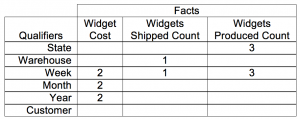Ev en though it happens annually, teams building new visualizations often forget to think about the effects of turning over from one year to another.
en though it happens annually, teams building new visualizations often forget to think about the effects of turning over from one year to another.
In today’s fast paced, Agile world, requirements for even the most critical dashboards and visualizations tend to evolve, and development often proceeds iteratively from a scratchpad sketch through successively more detailed versions to release of a “1.0” production version. Organized analytics teams evolve dashboards within a process framework that include checkpoints ensuring standards are met for security, reliability, usability, and so on.
A reporting team can build a revolutionary analytics capability enabling unprecedented visibility into operations, and then, if year turnover isn’t included in requirements, experience embarrassing errors and usability challenges in the January after initial deployment. In effect, the system experiences its own Y2.xK crisis, not too different from the expected Y2K crisis 16 years ago. Continue reading
 As I mentioned in the
As I mentioned in the 





